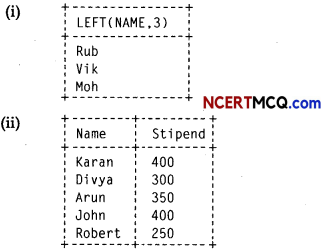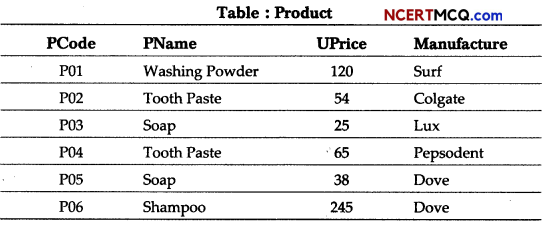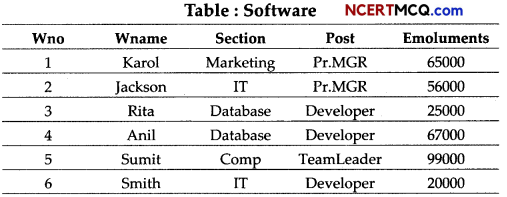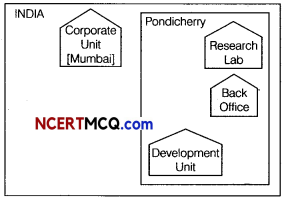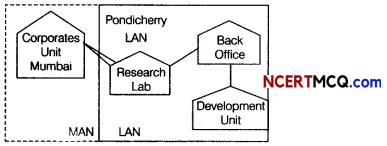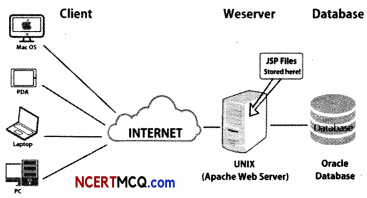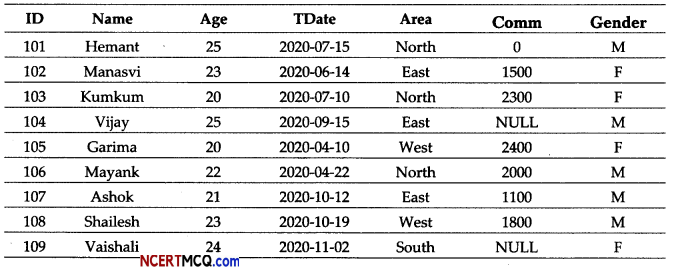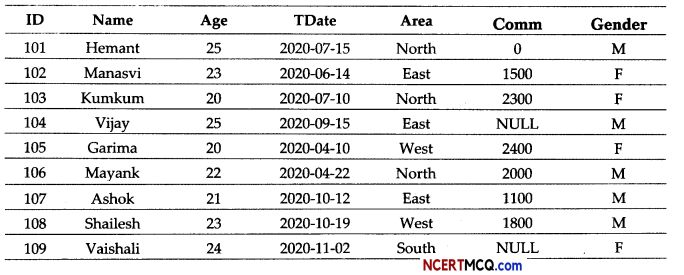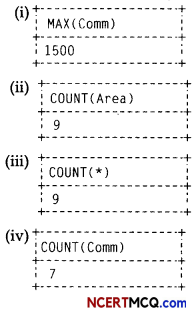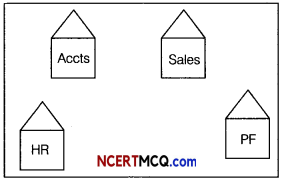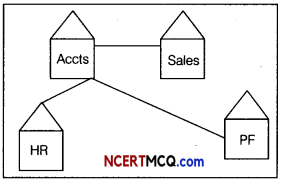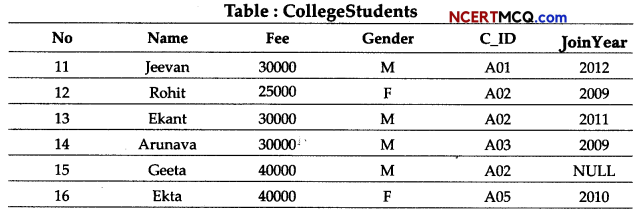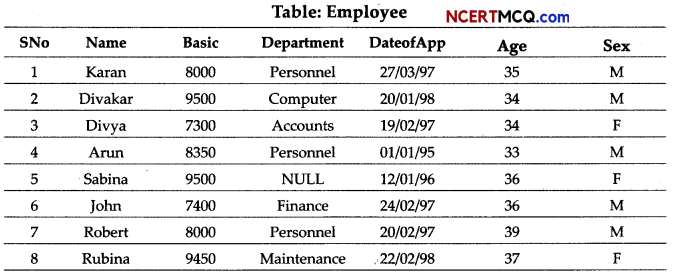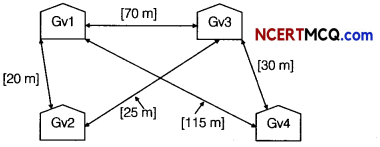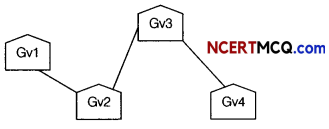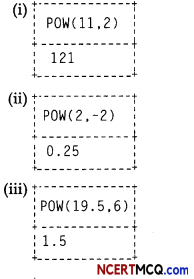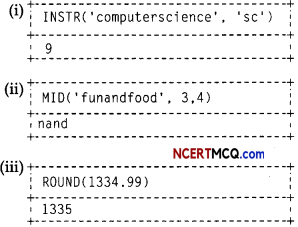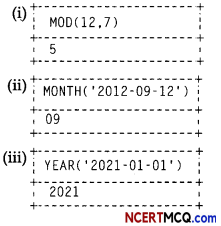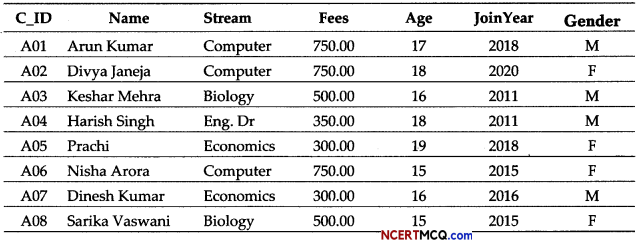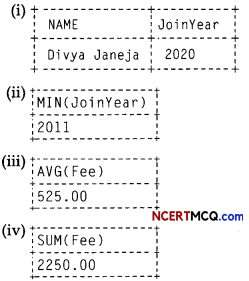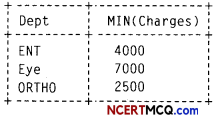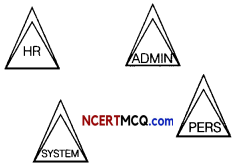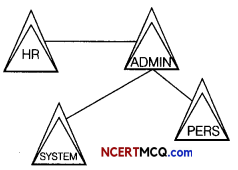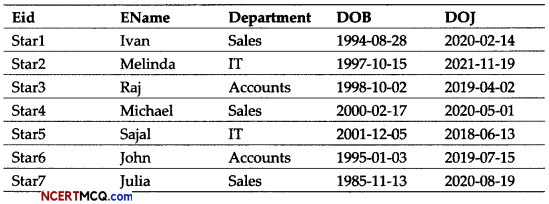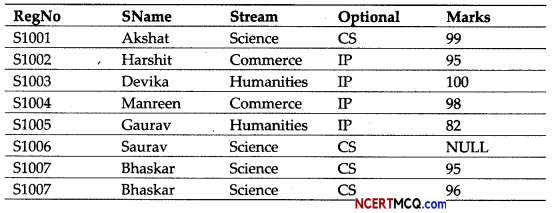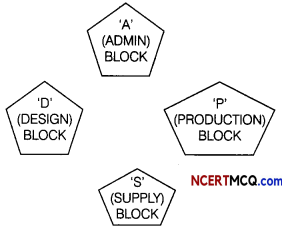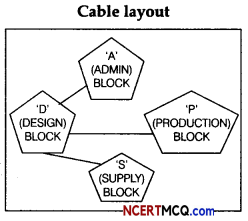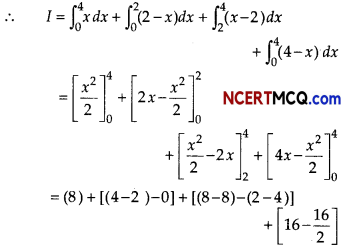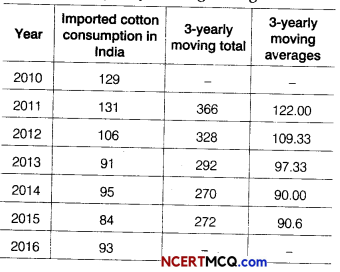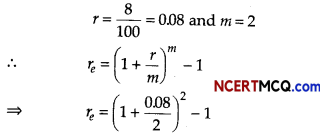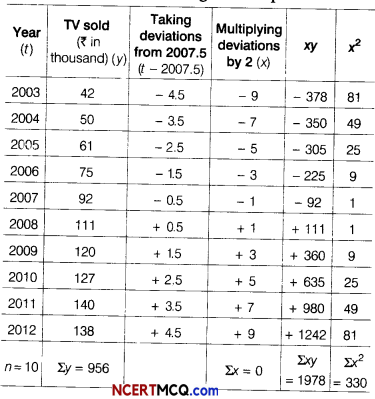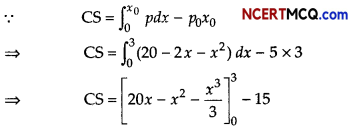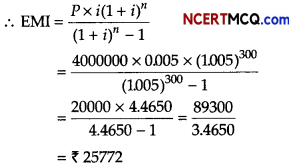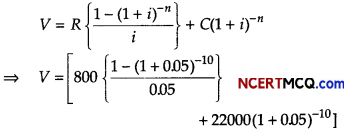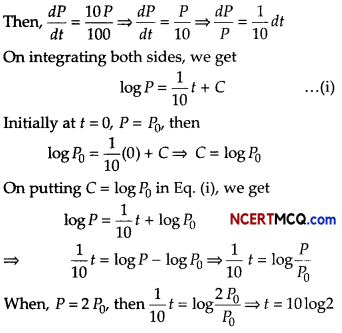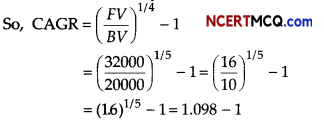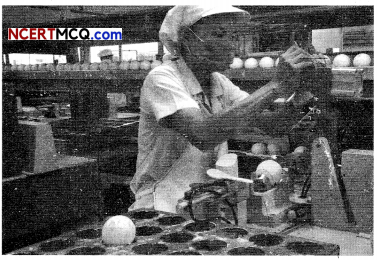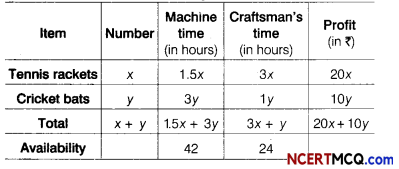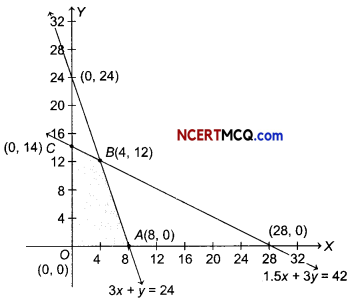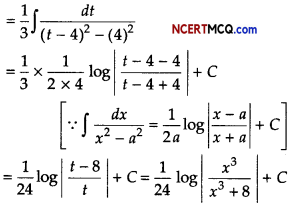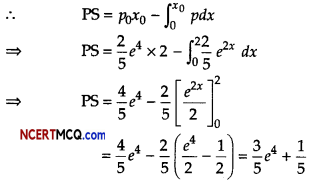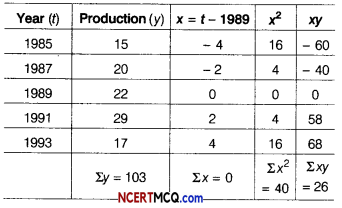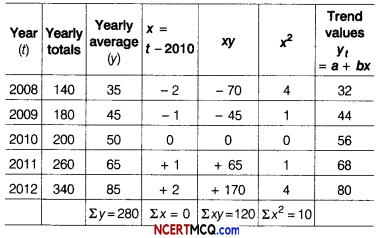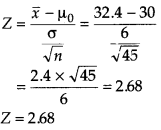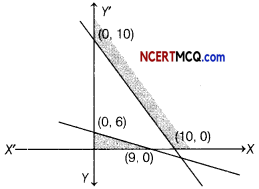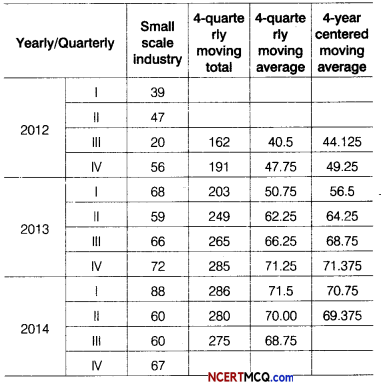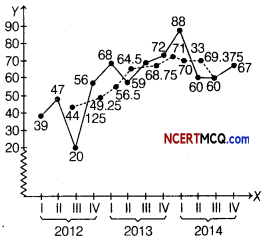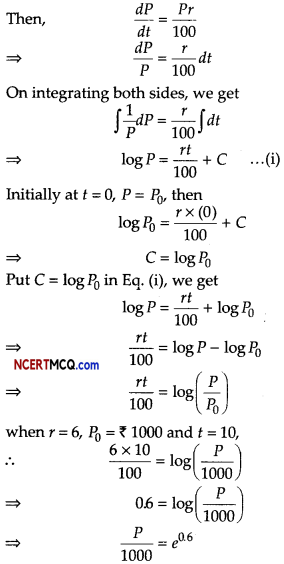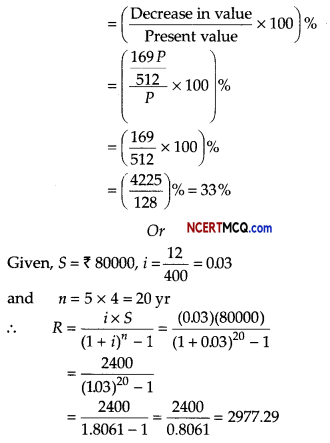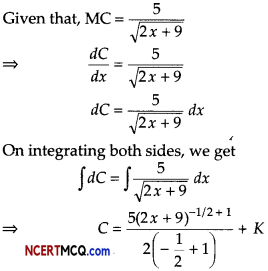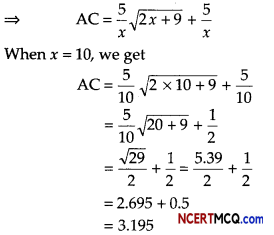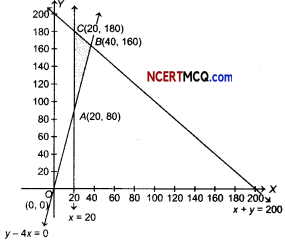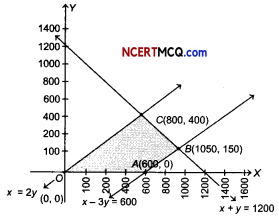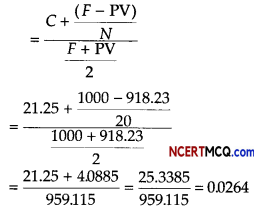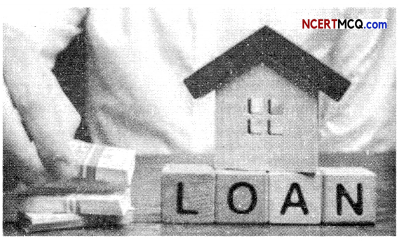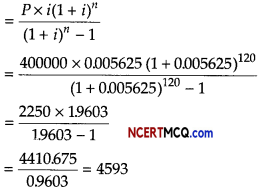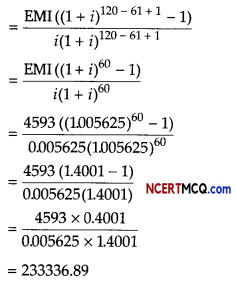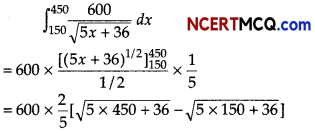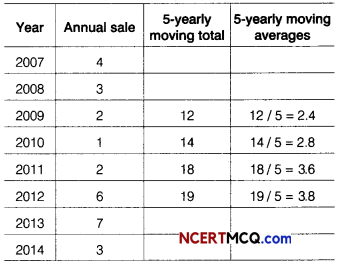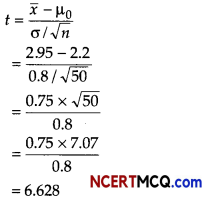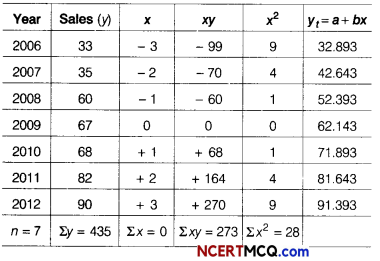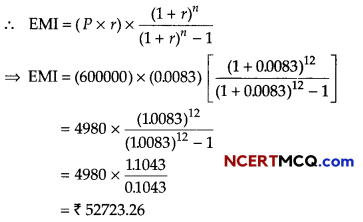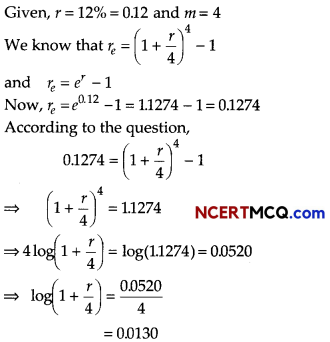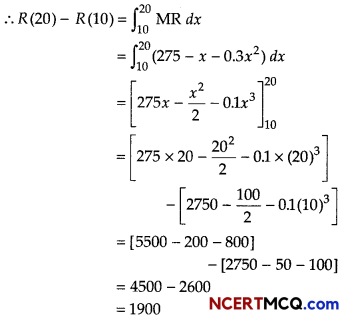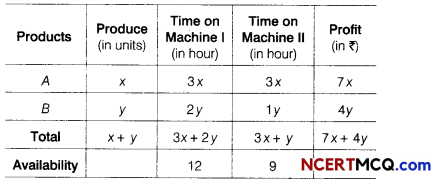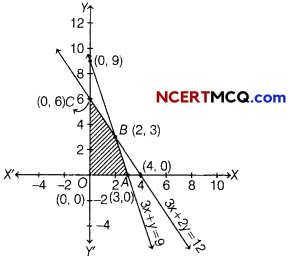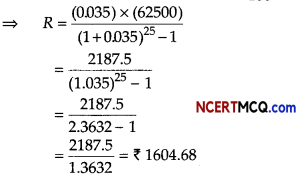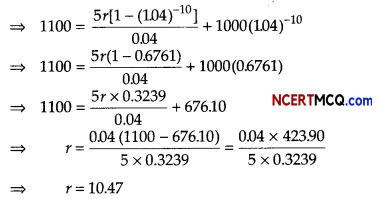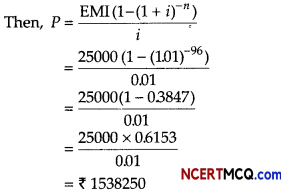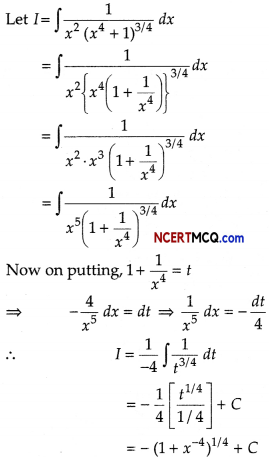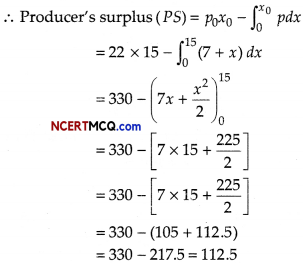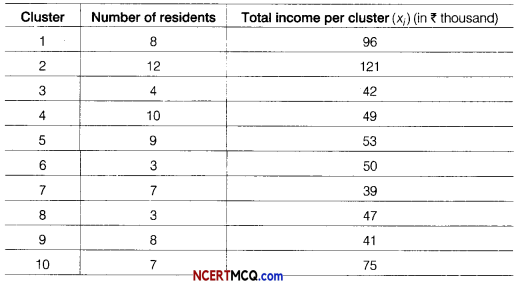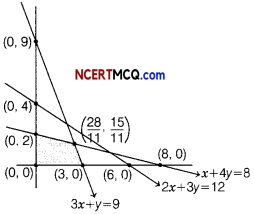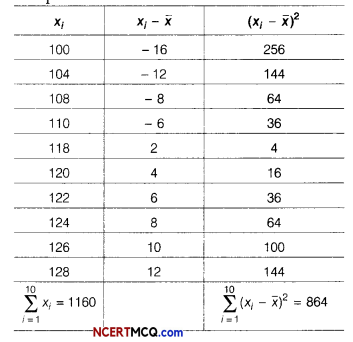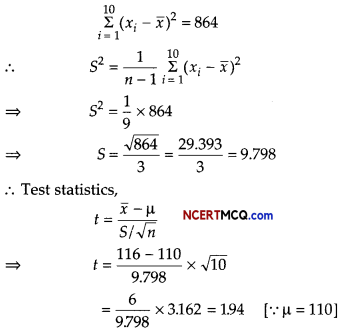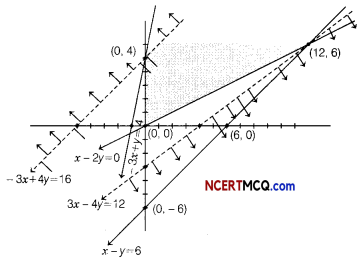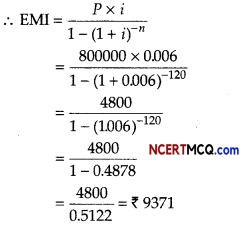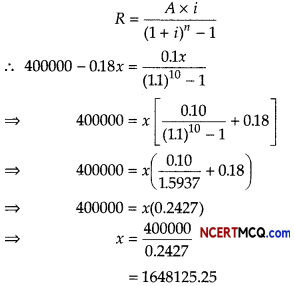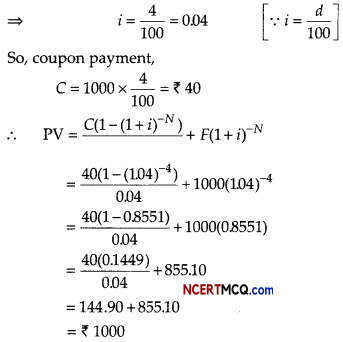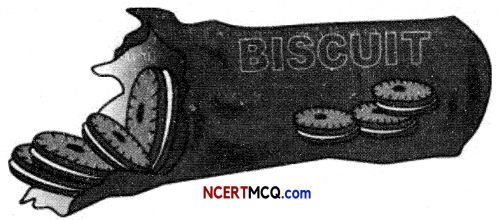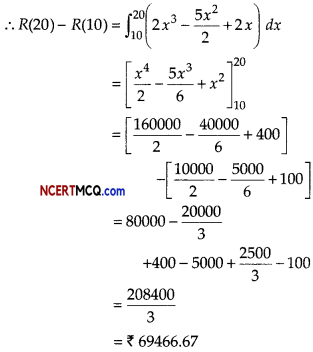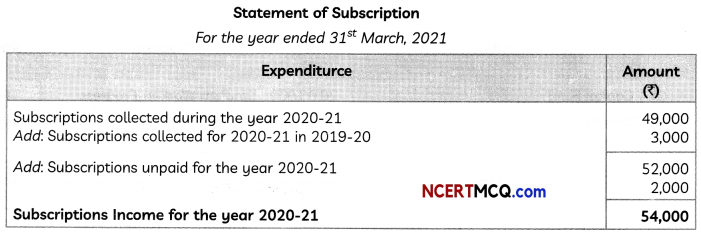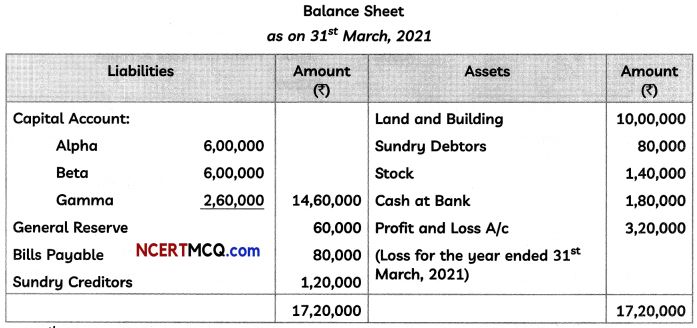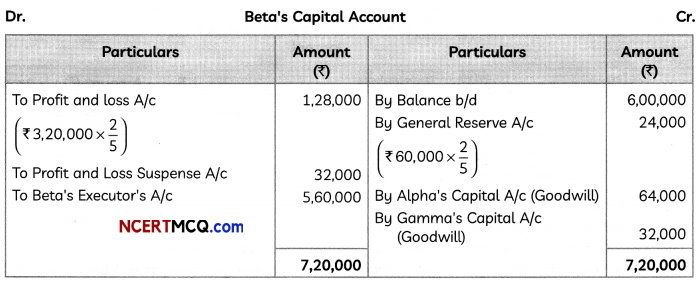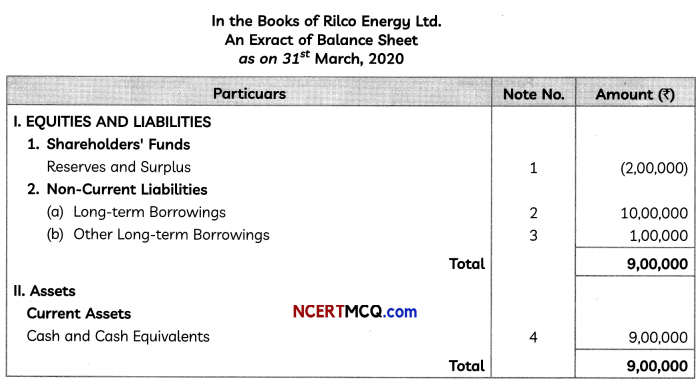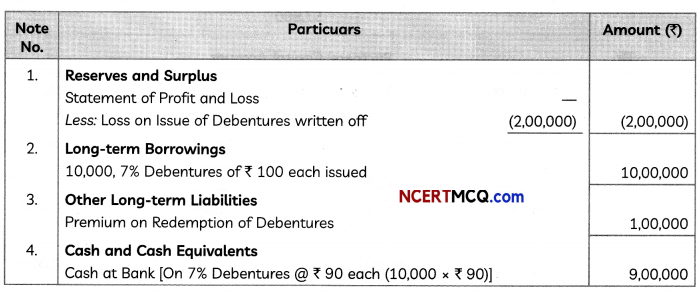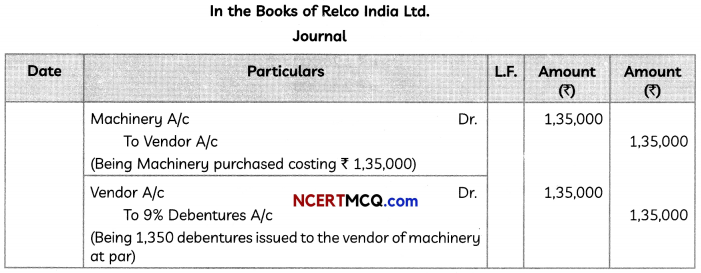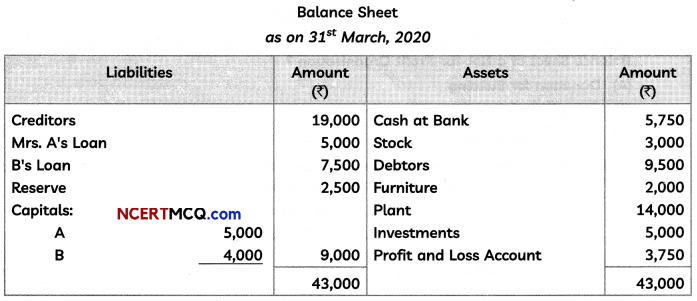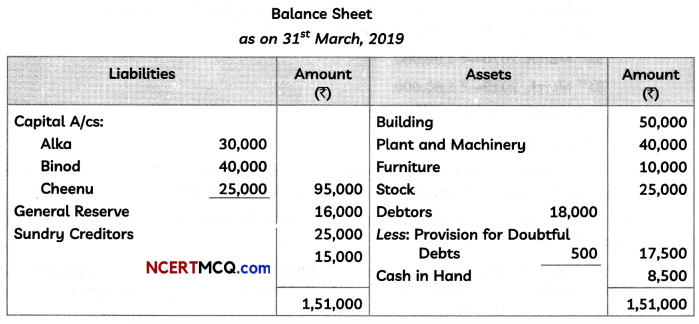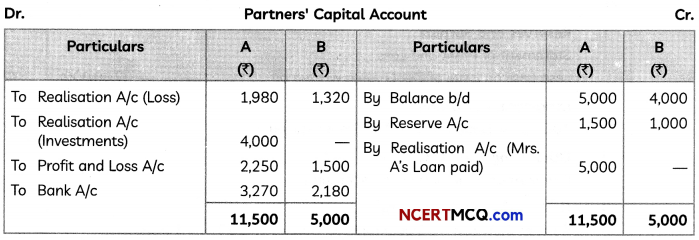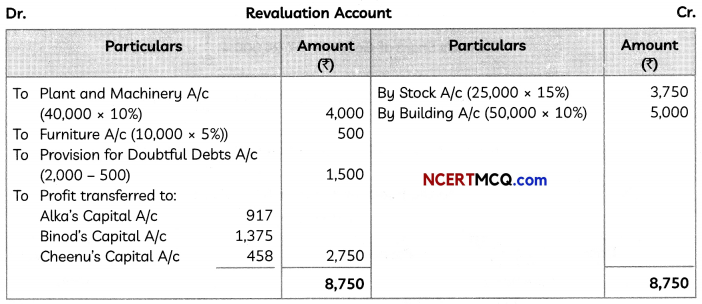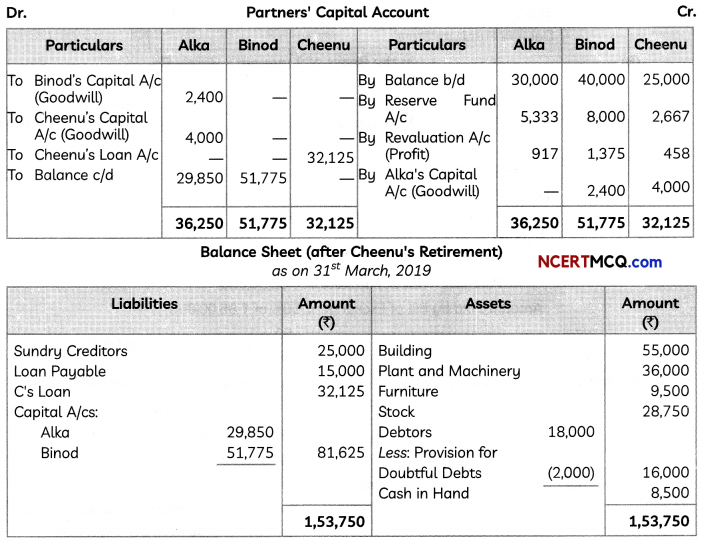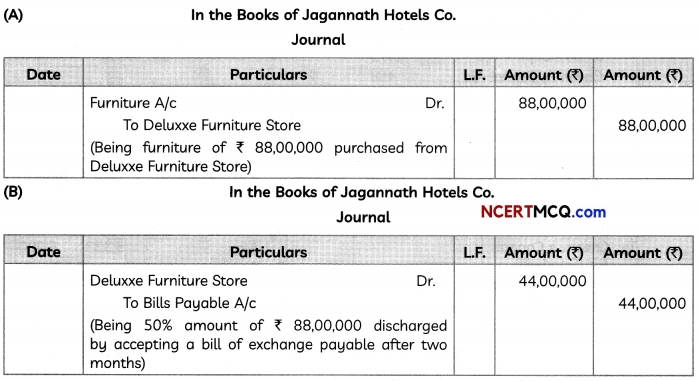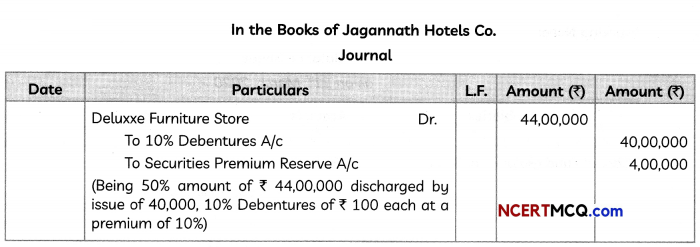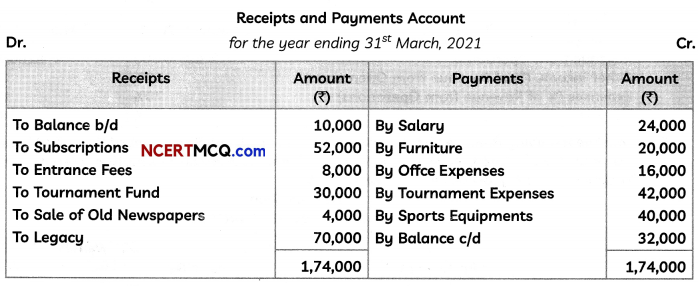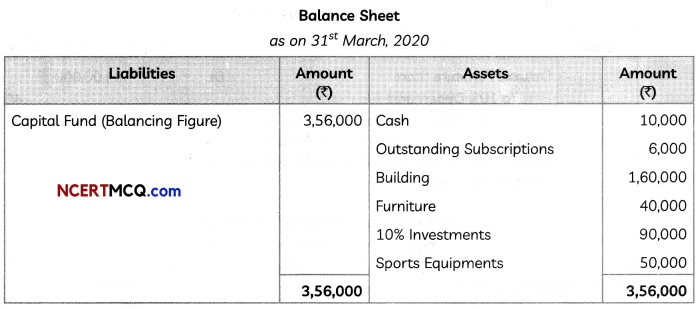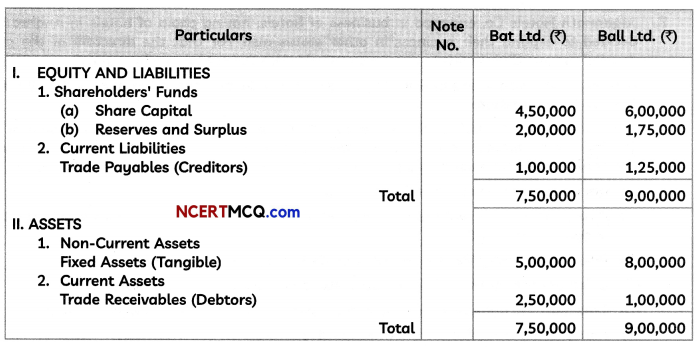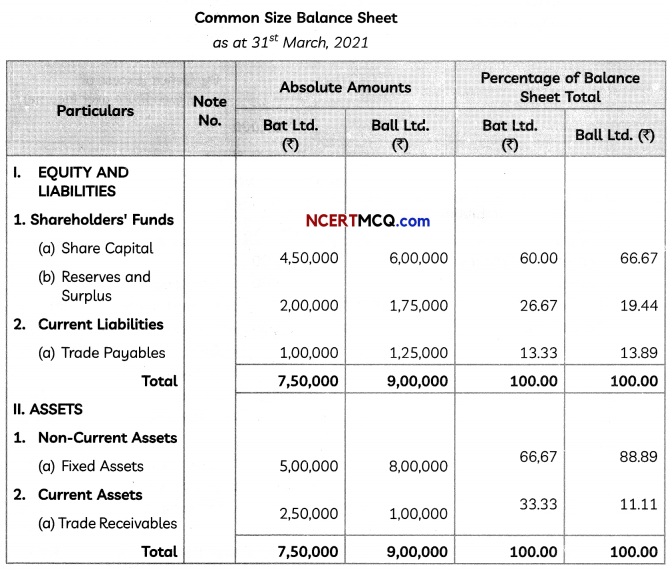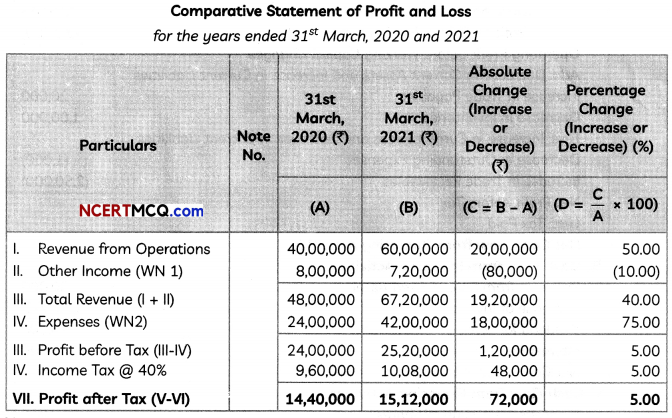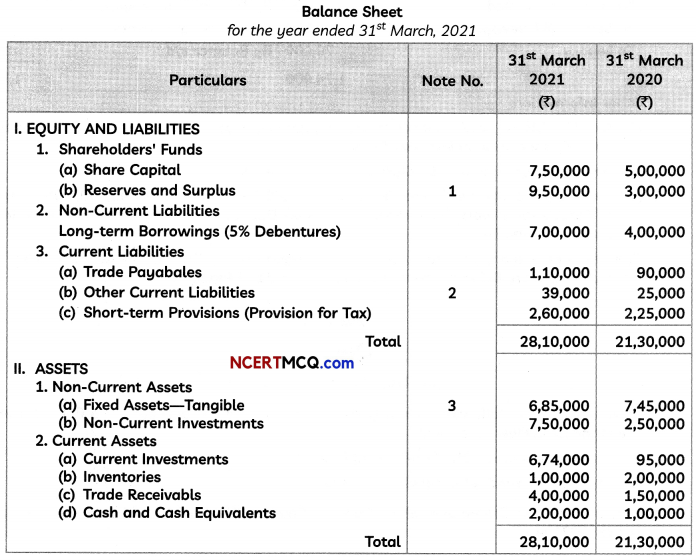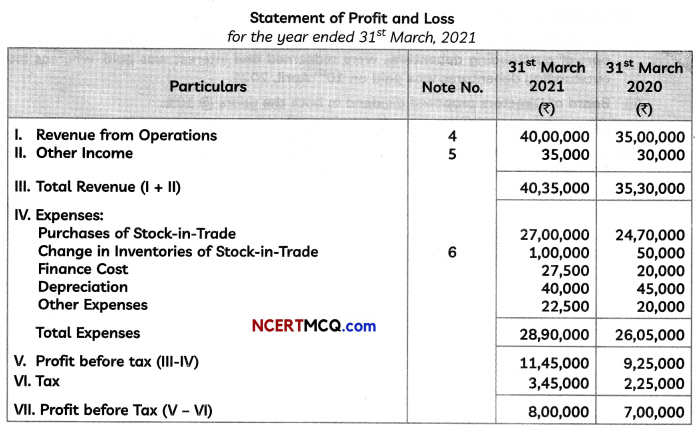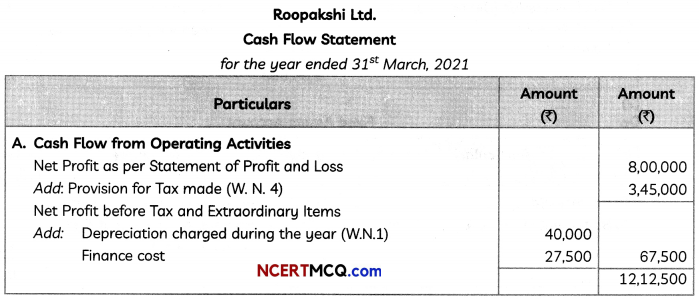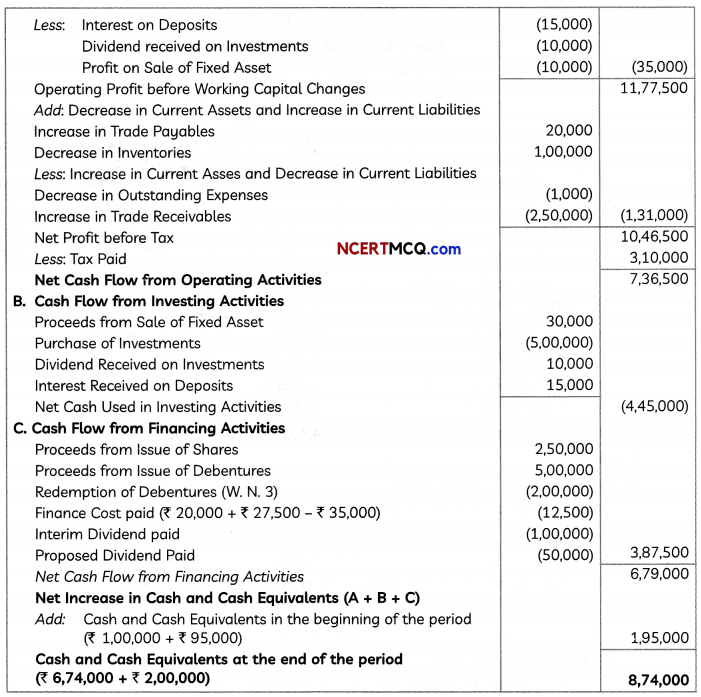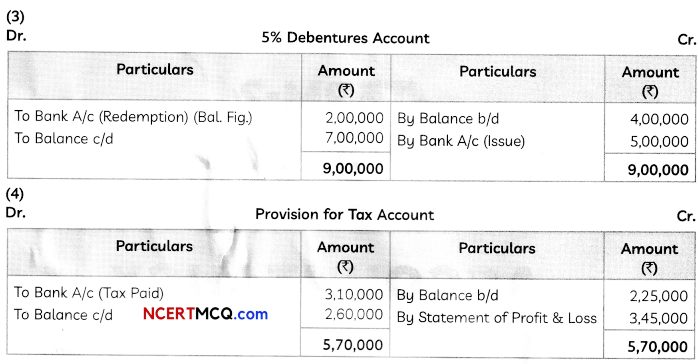Students can access the CBSE Sample Papers for Class 12 Informatics Practices with Solutions and marking scheme Term 2 Set 7 will help students in understanding the difficulty level of the exam.
CBSE Sample Papers for Class 12 Informatics Practices Term 2 Set 7 with Solutions
Maximum Marks : 35
Time : 2 hours
Instructions:
- The question paper is divided into 3 sections – A, B and C.
- Section A, consists of 7 questions (1-7). Each question carries 2 marks.
- Section B, consists of 3 questions (8-10). Each question carries 3 marks.
- Section C, consists of 3 questions (11-13). Each question carries 4 marks.
- Internal choices have been given for question numbers -1, 3, 8 and 12.
Section – A
(Each question carries 2 Marks)
Question 1.
Jatin is learning networks and has come across various terms related to networks , such as MAN, URL, WWW, WAN etc. Before going into the detailed description of the terms he wants to know their expansions. Provide him the expansions of the following terms (any two in each option).
(i) MAN
(ii) URL
(iii) WWW
Or
(i) WAN
(ii) VoIP
(iii) ARPANET
Answer:
(i) Metropolitan Area network
(ii) Uniform Resource Locator
(iii) World Wide Web
Or
(i) Wide Area Network
(ii) Voice over Internet Protocol
(iii) Advanced Research Projects Agency Network
![]()
Question 2.
(i) Susmita could not recall the exact term for softwares used to view web pages or browse the web. Can you help her with the term?
Answer:
A web browser is a software that is the platform to view web pages. It also acts as an E-mail and chat client. It even helps users in browsing the web.
(ii) Alex was trying to connect the computers in his office in a specific topology. He wanted to know the advantages of the ring topology. Suggest him the advantages.
Answer:
There are some reasons, why ring topology should be used
(a) It has better performance than bus topology, even when the nodes are increased.
(b) Ring network can handle high volume of nodes in a network (robust).
(c) Reduced chances of data collision as each node release a data packet after receiving the token.
(d) Token passing makes ring topology perform better than bus topology under heavy traffic.
(e) No need of server to control connectivity among the nodes. Equal access to the resources.
Question 3.
Govind was given a table Defense storing details of Defense personnel, by his teacher. His teacher taught him the string functions and told him to produce certain outputs from the table. The teacher told that the outputs may require use of more than one function. Help him in production of the outputs as required.
Table: Defense

(i) To display the PerName(Person name) along with the Wing joined in lowercase.
(ii) To display the last 4 characters of the HQ(Headquarter).
Or
(i) To display the count of Airforce personnel.
(ii) To display the 1st three characters of the wing in uppercase.
Answer:
(i) SELECT LOWERCCONCAT (PerName.Wing)) FROM Defense;
(ii) SELECT RIGHT (HQ,4) FROM Defense;
Or
(i) SELECT COUNT(*) FROM Defense WHERE Wing=“Airforce”;
(ii) SELECT UCASE( Left (Wi ng, 3)) FROM Defense;
Question 4.
Param has heard that E-mail services are much easier and faster than postal systems. Provide him information and advantages of E-mail. Also, compare E-mail with chat services.
Answer:
- Electronic mail is a method of exchanging messages between people using electronic devices. E-mail entered limited use in the 1960s, but users could only send to users of the same computer. Some systems also supported a form of instant messaging, where sender and receiver needed to be online.
- E-mail is a very popular way of communicating with others over the Internet. An application that allows users to send, receive and read E-mail is called an E-mail client.
- E-mail operates across computer networks, primarily the Internet. Today’s E-mail systems are based on a store-and-forward model.
- E-mail servers accept, forward, deliver and store messages.
- Neither the users nor their computers are required to be online simultaneously. They need to connect, typically to a mail server or a webmail interface to send or receive messages or download it.
Applications: People have come to rely on E-mail for any number of functions, in addition to communication, including but not limited to reference, collaboration, storage, task management, mobile access, calendars & planning and covering your bleep.
Differences between E-mail and chat are as follows
| Chat | |
| Large amount of data can be transferred. | Small text conversations. |
| Sender and receiver need not be online. | Sender and receiver need to be online. |
| Can carry file attachments. | Usually does not carry file attachments. |
![]()
Question 5.
Mr. Johnson, teacher of a school asked the following outputs in viva of his school. Piyali a student could not answer the questions. Help her in finding the outputs.
Write the outputs of following SQL statements.
(i) SELECT DAY (‘2016-09-11 ’);
Answer:

(ii) SELECT 34%5;
Answer:

Question 6.
Anurag a database operator is not quite conversant about the usage of GROUP BY clause of SQL . Tell him how it can be used in the following cases?
Table: Automobile

(i) Which column can be used for grouping the records?
Answer:
The Type column can be used for grouping the records.
(ii) Display each type and number of vehicles in the category.
Answer:
SELECT Type, COUNT(*) FROM Automobile GROUP BY Type;
Question 7.
Help Natasha in finding the outputs of the following commands using MySQL functions with respect to the table Automobile given in previous question.
(i) SELECT CONCAT(Aname.Type) FROM Automobile WHERE Type=“Heavy”;
(ii) SELECT UCASE(Type) FROM Automobile WHERE Qty>50;
Or
(i) SELECT M0D(Qty,5) FROM Automobile WHERE Type=“Heavy”;
(ii) SELECT LEFT (Aname, 3) FROM Automobile WHERE Type=‘‘Small” ;
Answer:
(i)
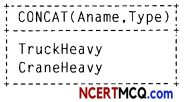
(ii)
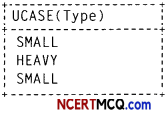
Or
(i)

The MOD() function returns the remainder of division. In the question here, the quantities for “Heavy” type are 30 and 90, hence mod returns 0 for both.
(ii)
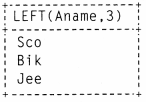
The LEFT() function extracts certain number of characters from left of a string. In the question here, for “Small” category the 3 names are “Scooter”,”Bike” and “Jeep” from which 3 characters are extracted from left.
![]()
Section – B
(Each question carries 3 Marks)
Question 8.
Prakash is using MySQL functions to generate certain outputs, but is not able to guess the outputs properly. Provide him your support in finding the outputs of the following queries.
(i) SELECT MONTHNAME(‘2020-11-15’);
(ii) SELECT ROUND! 199.9);
(iii) SELECT INSTR(‘Hollywood’,‘oow’);
Or
After preparing a table Emp with columns Eno, Ename, Dept and Salary Rachana wanted to produce certain outputs from the table, but she was facing problems in writing the queries. Help her
(i) To get the sum of salaries of “Salary” column of Emp table.
(ii) To get the count of unique department names.
(iii) To get the maximum salary from Emp table.
Answer:
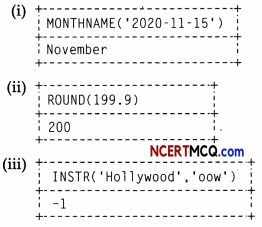
Or
(i) SELECT SUM(Sal)FROM Emp;
(ii) SELECT COLJNT(DISTINCT Dept) FROM Emp;
(iii) SELECT MAX(Salary) FROM Emp;
Question 9.
Help Anindita in finding the outputs produced from following statements using MySQL functions INSTR(), DAYNAME() and YEAR().
(i) SELECT INSTR(“Development”,“Dev”);
Answer:
Searches for the position of “Dey” in “Development”.
(ii) SELECT DAYNAME( “2019-09-11” );
Answer:
Displays the name of the weekday for the date mentioned.
(iii) SELECT YEAR( “2012 -11 – 02” );
Answer:
Displays the year part of the date in argument.
![]()
Question 10.
After writing the following SQL statements Mr. Kaustubh, ended up with errors indicating wrong function names. Suggest him with proper function names.
(i) SELECT CAPITAL( “abed”);
To convert the text to uppercase.
Answer:
SELECT UCASE(”abcd”):
(ii) SELECT EXTRACT( “abedef ”, 3,2);
To extract 2 characters from position 3 of the string.
Answer:
SELECT MID(”abcdef’3,2);
(iii) SELECT EXPONENT( 12,3);
To calculate 123
Answer:
SELECT POW(12.3);
Section – C
(Each question carries 4 Marks)
Question 11.
Help Sunaina with proper statements to get the outputs required in the following cases with respect to the table Emp given with columns Eno, Ename, Dept and Salary.
(i) To get the 1st three letters from the Ename column from Emp table.
Answer:
SELECT LEFT(Ename. 3) FROM Emp;
(ii) To get 123.
Answer:
SELECT POW(12.3);
(iii) To get the string “TIGER” in lowercase.
Answer:
SELECT IOWER(”TIGER”);
Question 12.
Akriti a student of class XII did not attend the classes on GROUP BY and aggregate functions and is now not able to solve the following assignment given by her teacher. Help her in the solutions.
Write SQL commands with respect to the table Army given below.
Table: Army

(i) To display the wing wise count of persons.
(ii) To display the total salary of majors.
(iii) To display the maximum salary among people whose Headquarter is in “Kolkata”.
(iv) To display the headquarter wise minimum salary.
Or
Write the outputs of SQL commands given with respect to the table Army given above.
(i) SELECT Wing, COUNT!*) FROM Army;
(ii) SELECT SUM(Salary) FROM Army WHERE LEFT! Pname, 3 )=“Ma j ” ;
(iii) SELECT MAX(Salary) FROM Army WHERE Headqua rter=“Kol kata”;
(iv) SELECT Headquarter, MIN(Salary) FROM Army GROUP BY Headquarter;
Answer:
(i) SELECT Wing, COUNT(*) FROM Army;
(ii) SELECT SUM(Salary) FROM Army WHERE LEFT(Pname,3)”Maj”:
(üi) SELECT MAX(Salary) FROM Army WHERE Headquarter=”Kolkata”;
(iv) SELECT Headquarter, MIN(Salary) FROM Army GROUP BY Headquarter;
Or
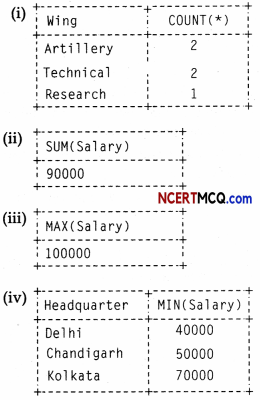
![]()
Question 13.
Arun Plastics has the following setup of buildings, with each building equipped with multiple computers. The distance between the buildings and the number of computers in each is given below:
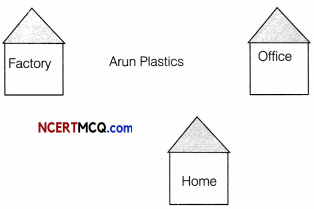
| Building | Number of Computers |
| Factory | 125 |
| Office | 30 |
| Home | 20 |
| Building | Distance |
| Factory-Office | 45m |
| Factory-Home | 15m |
| Office-Home | 120m |
(i) Suggest a suitable cable layout of connectivity between the buildings.
Answer:
Since the smallest distances are between Factory-Office and Factory- Home, the following layout will be economical
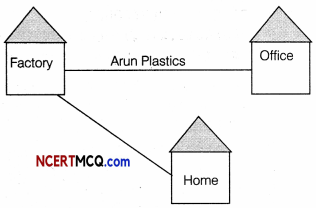
(ii) Suggest placement of server in the network.
Answer:
(ii) Server should be plaœd in the Factory as it has the maximum number of computers.
(iii) What kind of network(LAN/MAN/WAN) is formed here?
Answer:
A LAN network is formed as the distances between the buildings are small.
(iv) Which, topology should be used to connect the computers in each of the buildings?
Answer:
Star topology, as it is the best topology and it has multiple positive features in comparision to other topologies.



